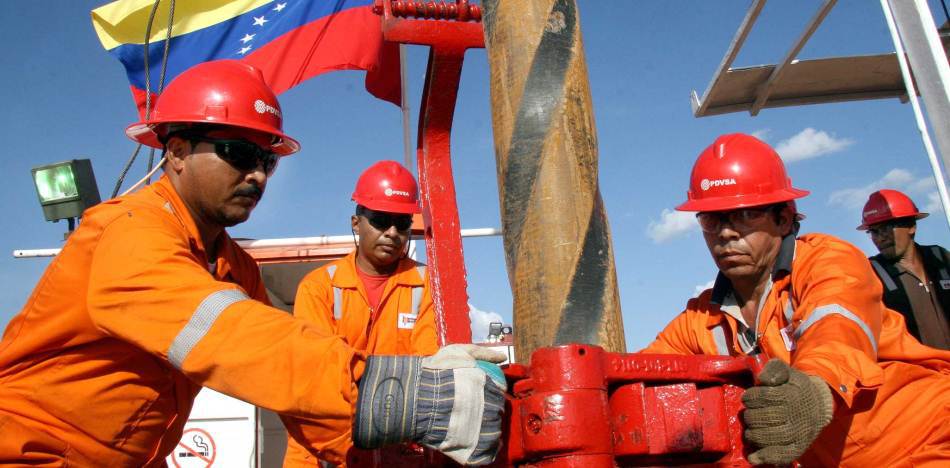Recently, it has become abundantly clear that the number of drills operating in Venezuela has dropped to levels of a country without oil reserves. Our oil industry was once the envy of the region; now it’s the tragedy of the region Chinese investment will not save us…thus far the Chinese have made only meager and insufficient investments that will not change the fundamental reality of our precipitous decline in production.

The number of drills in operation or “rig count” as analysts term it, is a thermometer of the vitality of an oil industry. It might sound like a truism, but if it is not drilled, there is no way to extract oil. Of course, in an oil state like Venezuela with 100 years of history, there are already tens of thousands of existing wells, and the reconditioning of them can help to boost production.
But without drilling new wells there is no way to reverse the natural decline in reservoir yields and in turn produce enough additional oil so as to increase the laughable 1.2 million barrels per day that the country is currently producing.
At present, the number of drills in operation is under 25, and knowing the conditions that prevail in the fields, plus the abandonment of their posts by qualified personnel, the drilling efficiency of these leaves much to be desired.
By comparison, an oil region with characteristics similar to those of Venezuela and a similar drilling history, the Permian basin of Texas, currently has 477 drilling operations, produces 3.28 million barrels of oil, 1.7 of condensates, and 15 billion cubic feet of gas. The projections are that by 2023 the Permian will be producing more than 5 million barrels, a figure that PDVSA has been announcing as its five-year goal more than 20 years ago, only to go in the opposite direction on the way to one million barrels.
But the reserves of the Permian pale before ours. They consist of 28.9 billion barrels of oil and 75 trillion cubic feet of gas. By way of comparison, only in conventional fields outside the Oil Belt, Venezuela has 44 billion barrels of light, medium, and heavy crude oil, 55% more than the Permian basin.
Why is that basin enjoying vigorous production, while ours is in a weakened state? The reason is very simple: lack of investment and application of geoscience and drilling technologies that in the last 15 years have made possible the rebirth of the Permian basin.
There, a company that is interested in drilling in a certain oil field goes to the private financial markets, has a choice between subcontractors, logging suppliers, and geophysical studies and, most importantly, knows that its effort and capital are protected by the rule of law, and sales can be made at prices set in transparent markets such as the NYMEX. Additionally, you know how much your royalty and tax costs will be without changing arbitrarily.
Think, dear reader: if you owned drills that are worth tens of millions of dollars, would you bring them to Venezuela contracted to a “briefcase company” that has never operated an oil field? Or, worse, would you put them at the service of PDVSA, a company that is in default on almost all of its debts and is being sued left and right for breach of contracts?
The truth is that the country would have to triple or quadruple the number of drills to see a stabilization and subsequent rebound of oil production, and only if we approach the environment of guarantees that exists in the Permian, will we be in a position to compete with that basin for the service of the equipment that is needed. Meanwhile, high-minded ads will be pure rhetoric with no practical results and we will continue to be the country with the largest oil reserves, but with the worst governance in the world.
Article first appeared at Panampost. Read the original here.













